Mark Sisson's Blog, page 167
October 8, 2017
Weekend Link Love — Edition 472
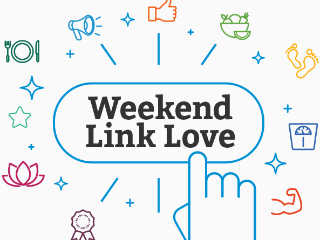 Research of the Week
Research of the WeekWomen who exercise before breakfast burn more fat throughout the day.
Whole eggs beat egg whites for gains.
Taking alpha-linolenic acid (ALA, an omega-3 fatty acid found in flax and canola oil) prevents exercise-induced metabolic improvements in obese rats.
LSD promotes freudian slips.
Vitamin K2 supplementation may support weight loss.
Both gluten/casein-free diets and modified Atkins keto diets improve autistic symptoms in children.
A low meat intake during pregnancy may increase the offspring’s risk of substance abuse.
New Primal Blueprint Podcasts

Episode 189: Mark Sisson: Elle Russ and I chat about my new book, the Keto Reset Diet.
Each week, select Mark’s Daily Apple blog posts are prepared as Primal Blueprint Podcasts. Need to catch up on reading, but don’t have the time? Prefer to listen to articles while on the go? Check out the new blog post podcasts below, and subscribe to the Primal Blueprint Podcast here so you never miss an episode.
Where I Part Ways with the Popular Keto Movement
Interesting Blog Posts
Big Data is making baseball a big bore.
Media, Schmedia
The stone tools that weren’t.
As KFC expands across Ghana, so do the inhabitants’ waistlines.
Everything Else
Tattoos that monitor your blood glucose.
Three Americans just received the Nobel Prize in Physiology for their work on circadian clock responses to light and darkness.
Tim Noakes on why you should eat more meat to save the environment.
Things I’m Up to and Interested In
Thrills of my week: Being on Good Morning America to share about The Keto Reset Diet and watching it hit #1 on Amazon. I am humbled and so grateful for the support of this community, which has been an incredible seedbed for this—and all my Primal projects.
Interview I enjoyed: The one I did with Chris Armstrong at Re-Find Health about what and where I eat.
Stat I found alarming: Only 1 in 10 Americans loves to cook.
I’ve never seen a study retracted for this reason: The co-authors couldn’t agree on whose name would go first.
I think the man in this video exaggerates the technique but the point is well-made: How people walked before hard-soled shoes hit the scene.
Phenomenon I find fascinating: When the Silicon Valley engineers who helped create the “attention economy” fear they’ve set us on course for a smartphone dystopia.
Recipe Corner
Maple bacon coffee deviled eggs. Better than they sound.
Ever make okra? Now you can.
Time Capsule
One year ago (Oct 8 – Oct 14)
The Definitive Guide to Wine – How and what to drink.
How Expressing Your Emotions—or Not—Affects Your Health – What’s the cost of bottling it all up?
Comment of the Week
“I’m all for learning but I would never eat a broad. Or a gent. Bugs yes, people no. Sorry, Mark, that’s where I draw the line with meat.”
– You’re missing out, TomB-D (is that Tom Bombadil?).

The post Weekend Link Love — Edition 472 appeared first on Mark's Daily Apple.



October 7, 2017
Coconut and Red Palm Oil Salmon Chowder
 Wild salmon, red palm oil and coconut milk is a magical trio of fat and flavor. These three ingredients transform into incredibly delicious chowder with the help of cubed kohlrabi or rutabaga, chicken stock, leek, celery, and fresh dill. This chowder is really creamy and rich, and a deeply flavorful meal brimming with healthy fats.
Wild salmon, red palm oil and coconut milk is a magical trio of fat and flavor. These three ingredients transform into incredibly delicious chowder with the help of cubed kohlrabi or rutabaga, chicken stock, leek, celery, and fresh dill. This chowder is really creamy and rich, and a deeply flavorful meal brimming with healthy fats.
Red palm oil is fantastic in a creamy soup or stew, making the texture richer and smoother. Red palm oil is also extremely nutrient dense, rich in beta-carotene, vitamin E, CoQ10, vitamin K1, and other antioxidants. Once you get in the habit of cooking with red palm oil, it’s easy to go through an entire jar. In addition to soups and stews, use it to sauté or roast vegetables and cook eggs.
Time in the Kitchen: 45 minutes
Servings: 2 to 4
Ingredients

3 tablespoons red palm oil (45 ml) (Look for sustainable varieties.)
1 leek, white and pale green parts only, halved and thinly sliced
2 stalks celery, cut into thin half-moons
1 kohlrabi or rutabaga, peeled and cut into 1-inch/25 mm cubes
3 cups chicken stock (700 ml)
1 cup full fat canned coconut milk (or whole cream) (240 ml)
1 1/2 pounds salmon, cut into 2-inch pieces (skin removed), lightly salted (680 g)
1 tablespoon finely chopped fresh dill (15 ml)
Instructions

Heat red palm oil in a deep, wide skillet or Dutch oven over medium heat.
Add leek and celery. Saute until celery is soft, about 5 minutes. Season lightly with salt.
Add kohlrabi/rutabaga, chicken stock and coconut milk. Simmer gently until the kohlrabi/rutabaga is easily pierced with a fork, 15 to 20 minutes.
Add salmon to the broth. Simmer, with a lid, until salmon is cooked through, 3 to 5 minutes. Add fresh dill before serving.

The post Coconut and Red Palm Oil Salmon Chowder appeared first on Mark's Daily Apple.



October 6, 2017
That Post-It Note with “Mark Sisson—Primal Life” Is Still Hanging on My Fridge
It’s Friday, everyone! And that means another Primal Blueprint Real Life Story from a Mark’s Daily Apple reader. If you have your own success story and would like to share it with me and the Mark’s Daily Apple community please contact me here. I’ll continue to publish these each Friday as long as they keep coming in. Thank you for reading!
 Growing up I was always very energetic and athletic but had a very high metabolism so weight gain was never an issue. Really didn’t start gaining weight until I moved to Florida 5 months before joining the military. I joined the military in 2007 when I was 21-years-old and at this point had gained some extra weight. For the Air Force I believe the cutoff for a height of 5’10 was 191 lbs, and I remember my recruiter putting me on the fat boy program a month before joining because I was within 10 lbs of that cutoff. That was a very high weight for me, I don’t ever remember being more than 150 lbs before then. I got out of basic training at 21 years old in worse shape by a mile then I am now.
Growing up I was always very energetic and athletic but had a very high metabolism so weight gain was never an issue. Really didn’t start gaining weight until I moved to Florida 5 months before joining the military. I joined the military in 2007 when I was 21-years-old and at this point had gained some extra weight. For the Air Force I believe the cutoff for a height of 5’10 was 191 lbs, and I remember my recruiter putting me on the fat boy program a month before joining because I was within 10 lbs of that cutoff. That was a very high weight for me, I don’t ever remember being more than 150 lbs before then. I got out of basic training at 21 years old in worse shape by a mile then I am now.
From 2007-2012, I was dating/married to my now ex-wife. During that time I reached a max weight of 205 and dealt with depression strongly. At one point in late 2010 early 2011 I was doing a good job of working out one hour a day during lunch at 5 times per week. These were the typical body part focused 3 set of 8-12 reps with 1 minute rest. Never saw much gain but I did feel better. Well during that time we moved from Texas to Utah and my schedule changed and I quit going to the gym. After a year and a half in Utah I ended up getting divorced. The first month I found out about the divorce I lost 30+ lbs, mostly related to stress but coupled with the gym again. As before, these gym sessions were one body part focused with the same sets/reps but now were anywhere from 90-120 minutes a session, 6x per week, and even occasionally twice a day. It provided my main goal, to have a good looking body. What it also provided was two shoulder surgeries from lifting too heavy. At the peak of this time frame I reached 165 lbs but steady weight was closer to 185 lbs. I had access to some of the best gyms for free and also time from work to make it to the gym which really allowed an ease of fitting fitness into my schedule.
June 2014 rolls around and I am moving on from military life to a regular job. My new job as a mechanic has me on the road quite often, averaging 3-4 days per week away from home. I tried to keep fitness into my routine but started to struggle keeping a steady schedule with it always changing. Eventually I gave up on working out again and promised to eat right and do little things. Well in December of 2016 I weighed in at 195 during my doctor visit. Remember the scene from The Simpsons where Homer is gaining weight on purpose to be able to work from home and he is weighing himself, gets upset because he hasn’t gained any weight then Bart points out his belly on the towel rack? He makes a noise like ooooooh ooohhhhh my, noooo nooooo. I did that when I saw that weight. I have been there before and refuse to go back.

I made the typical New Years resolution to get back into shape and blah blah blah. I just kept making excuses. I travel and it’s so hard to find time…you’ll find it if you want it. I can’t get a good workout in 30 min…bullcrap. I’m swamped on time let me just get some Wendy’s…I no longer miss that greasy goodness.
Come to April 26th. At this point I have worked out 2 days in a row and made a promise to myself to continue. What happens next, I believe was the key moment in this transformation. I was getting dinner and having a drink at the Hilton Garden Inn bar. This gentleman sits a few seats down and I’m just in awe. He’s in great shape and has on his companies shirt so I safely assume he is also a road warrior. I asked him how the hell he stays in such great shape. Long story short, that post-it note with Mark Sisson Primal Life is still hanging on my fridge.
I read the 21-Day Challenge and I took it. No carbs, the “correct” food pyramid, the slow steady walks, and the quick but heavy workouts. I thought you know what this might work let’s do this. Within one week I dropped 6 lbs, the second week an additional 5 lbs, and at the end of the third week I lost a total of 17 lbs. I was amazed.
The quick results were amazing! The longer effects seem to be better. When travelling I always select the highest floor of the hotel and never touch the elevator. At the airport I will walk around and listen to music before I sit, the flight is for sitting. I eat to my heart’s content but only meat, fruits, veggies, and water. I carry one 50 lb cable with me when travelling to make sure I can always get a workout in. And I haven’t worked out for more than 45 minutes in one day since I started this. But I think the thing that affected me the most and for the best was spending 15 minutes a day outside and 15 minutes having fun. Traveling allows you to quickly hole yourself up in a room and not want to come out and that was being passed onto my personal life.
Not everyday is easy, some workouts are better than others, and you tried your best but you couldn’t do it. Those are my excuses now. I feel better now then I ever had. I’ve been happy with my physical look in the past but still battled depression. I am complete now. I feel great physically and mentally and that has been a tremendous positive in not only my life but my son’s also. He is almost 3 and has repeated “daddy is happy” so many times in the last two months, and nobody taught him that. I am able to thank you for setting these ground rules for this lifestyle, I hope the gentleman from Hilton Garden Inn in Tifton, GA, reads this and knows that I also thank him for introducing me the Primal life!
Will Wareham

Want to make fat loss easier?
Try the Definitive Guide for Troubleshooting Weight Loss for free here.
The post That Post-It Note with “Mark Sisson—Primal Life” Is Still Hanging on My Fridge appeared first on Mark's Daily Apple.



October 5, 2017
What I’ve Learned from Eating Abroad
 I’ve been lucky enough to travel to interesting places. The trips I’ve taken in the last 10-15 years, during my “Primal period,” have been the most meaningful, rewarding, and downright enjoyable because I’ve been able to view other cultures and customs through the prism of health, nutrition, and human evolution. I bring something back every trip—a tip, an insight, an alteration of an existing conviction. Travel abroad isn’t just a good time. It’s educational.
I’ve been lucky enough to travel to interesting places. The trips I’ve taken in the last 10-15 years, during my “Primal period,” have been the most meaningful, rewarding, and downright enjoyable because I’ve been able to view other cultures and customs through the prism of health, nutrition, and human evolution. I bring something back every trip—a tip, an insight, an alteration of an existing conviction. Travel abroad isn’t just a good time. It’s educational.
What have I learned eating abroad?
There’s Something Uniquely Terrible about Wheat in the U.S.
I have the perfect level of sensitivity to wheat. I’m not celiac, but I’m sensitive enough that it affects me. If my sleep is bad, or I’ve had alcohol, or my stress is high, wheat reliably produces symptoms. But even those symptoms are manageable—mostly superficial bathroom stuff.
This means I’m quite attuned to the quality of wheat. Wheat simply doesn’t affect me to the same degree in other countries. When I was in Greece, a couple times I had some baklava after dinner or pita dipped in hummus or olive oil. Pita is unleavened. It certainly isn’t fermented. It’s about as unaltered as you can get. And it didn’t affect me. Granted, I wasn’t eating more than a piece in a single day. But a single slice of bread back home is usually enough to produce at least a few niggling symptoms.
I’ve noticed similar null responses to bread in France and pasta in Italy. I’m not sure what it is, exactly. Maybe it’s the ubiquity of dwarf wheat in the U.S., which is known to produce enhanced reactivity in celiacs and gluten-sensitives. Maybe it’s the Roundup many American wheat farms spray before harvest.
Portion Size Is a Big Factor in America’s Weight Problem
Although we tend to highlight the roles food quality and macronutrient ratios play in obesity and other diseases, we can’t ignore the role food quantity plays. One massive change from our ancestral environment is that in the U.S., you can go into the average chain restaurant and have a trough of seed oil-soaked carbohydrate with a quart of sugar water served up in a few minutes for under $15. The portion sizes are gargantuan. Salad bowls full of pasta, pizzas the size of manhole covers, plates of fries that arrive overflowing onto the table. You go pick up Chipotle burrito bowls for your officemates and it’s like carrying a golden retriever puppy in the bag.
I didn’t really notice this until I traveled abroad with Primal awareness.
You won’t get a large salad bowl filled to the brim with pasta in Italy. In China, you’re not being served 4 cups of white rice in a single sitting. Soda in Europe is served in small cups like you’d use at home, not 32 ounce tankards. It’s a small detail, but it makes a big difference.
Industrial Food is Addictive
I knew that the food industry employs top scientists who manipulate flavor combinations and ingredients to make the food extremely hard to resist and easy to overeat. But being in a place like Kauai, which isn’t “abroad” but until quite recently was a separate nation with its own history and tradition and culture, really hammered it home. Hawaii is a bounty of healthy local food. Fruit literally rots on the side of the road. There are banana trees in every yard. The drugstore sells local grass-fed beef. The seas teem with fresh fish, the forests with wild boar, and roadside stands sell ahi jerky and smoke meat (smoked wild boar). Every time I visit, I eat incredibly well. Staying Primal is easy and quite inexpensive.
Yet, native Hawaiians are the most obese ethnic group in Hawaii. They’re eating spam musubis (admittedly delicious), macaroni salad, tons of fried food. The most well-known dish—the plate lunch—usually consists of meat either breaded and fried and/or cooked in sweet sauce (teriyaki, usually), white rice, macaroni salad, and maybe an iceberg lettuce salad with seed oil-laden dressing. I get the distinct sense that “native foods” are viewed as quaint, eaten only occasionally alongside the industrial food, or just plain ignored. It’s a damn shame. but industrial food always wins. It’s supposed to, and that’s the problem.
Fasting Solves a Lot of Problems When Traveling
Long ago I decided fasting was a better option than eating whatever terrible food was available. These days, I look forward to it and consider travel my opportunity to fast. If food options are miserable in the airport or destination, I fast. I’d rather snack on my own animal fat than eat salads that have been sitting out for days or peanuts roasted in corn oil.
Then I figured out how fasting helped with another unavoidable aspect of travel: jet lag. Airline food service typically hews to the schedule of the departure time zone. Food is a powerful circadian entrainer, so this prolongs your body’s adaptation to the new time. I hew my eating to the schedule of the arrival time zone. This hastens my body’s adaptation.
My last opportunity to eat will be dinner time back home. My next opportunity will be breakfast time at my destination. This can turn into a really long fast. If I leave early in the day before dinner, I don’t eat dinner on the plane. If I arrive at my destination at night, I wait till morning to eat. I’m ready for that breakfast, to be sure, but I also bring more energy to the first day of my trip as a result.
Walking Is the Best Way to Discover Good Food
The Old World wasn’t built for cars. It was built for pedestrians. You feel this when you go crawling through the tiny side streets and alleyways using only your senses and intuition as guides. These are better guides than star ratings and ego-driven reviews. They’re ancient, ancestral, Primal. They lead to adventure. Yelp and other restaurant review apps have softened us and killed the excitement of stumbling on a great new food spot. They turn trips linear. That’s a shame, because discovering something delicious out of the blue is one of the best parts of traveling.
A favorite meal in Bangkok happened at a breakfast cart serving jok, the Thai version of rice porridge. The family was sleeping and I got up to go for a walk. Rice porridge, pork bone broth, pork liver, pork kidney, ground pork, some type of bitter green topped with salted pickled chilis. It wasn’t in any restaurant guides (I looked). Maybe it’s on Yelp or TripAdvisor these days. But I never would’ve found it if I hadn’t gone walking and noticed the long line and incredible smells.
Go Where Locals Go, Not Where They Say to Go
Many times locals will change their recommendations based on what they think you’ll like. So, the Beijing taxi driver will take you to the place all the other tourists visit, not where he takes his wife for date night. What you want is to eat where the locals actually eat. See where the workers go for lunch, the businessmen for dinner, the laborers for snacks. Watch for teeming crowds, then go eat whatever they’re eating.
Eat the Local Specialty (Allergies and Intolerances Permitting)
Clichés can be tiresome. But they shouldn’t be ignored. They develop for very good reasons, especially when they involve regional delicacies.
Parmigiano-reggiano is not a fad in Modena. Place a crystalline shard on your tongue and try to deny its greatness. Beef is the real deal in Argentina. Eat a ribeye medium rare slathered in chimichurri with a glass of Malbec and call it a cliché. South African biltong destroys any jerky I’ve had back home, especially if it’s made from kudu. Carnitas street tacos with pickled carrots and chilis may be a cliché in Mexico, but you’ll eat three of them at a time if you know what’s good for you.
This being a Primal website, you’re probably leery of certain foods. People with established allergies or intolerances to certain foods should not eat those foods just because they’re the local delicacy. But if you have some leeway, if your physiology allows straying, if the symptoms aren’t that bad, by all means: Stray! Let it be part of the experience.
That said, “stray” does not mean gorge. “Try the hand-pulled noodles this old Uighur grandma serves with cumin lamb” doesn’t mean “Eat it every meal.” Sample. Taste. Enjoy. Appreciate. Move on.
Those are the general lessons I’ve learned from eating abroad. That’s what I’ve taken back, and it’s what I’ve used to extract large amounts of meaning and enjoyment from my travel experiences.
What tips do you have for eating abroad? What have you learned?
Thanks for reading, everyone. Take care!
The post What I’ve Learned from Eating Abroad appeared first on Mark's Daily Apple.



October 4, 2017
Where I Part Ways with the Popular Keto Movement
 The explosive growth of interest in the ketogenic diet has been a net good for the state of nutrition. For one, people have accepted the fact that eating fat won’t kill you, and they’re even getting clued into the benefits of eating it.
The explosive growth of interest in the ketogenic diet has been a net good for the state of nutrition. For one, people have accepted the fact that eating fat won’t kill you, and they’re even getting clued into the benefits of eating it.
But there are places where I part ways with the popular keto movement.
Let me explain….
Ketosis Isn’t the Point
Ketones themselves have beneficial mechanistic effects. It’s true.
The ketone body beta-hydroxybutyrate shows direct anti-inflammatory action, even blocking inflammatory diseases mediated by the NLRP inflammasome pathway. Ketogenic diets exert their protective effects on the brains of epilepsy patients through the anti-inflammatory actions of the ketone bodies, and type 1 diabetics who experience reduced cognitive function because of low blood sugar see those deficits erased by increasing BHB through dietary medium chain triglycerides. Another reason ketone bodies themselves are so therapeutic is that they represent an alternative fuel source for neurodegenerative disease patients whose brains can no longer process glucose effectively.
But epilepsy patients get results both from full-blown medical ketogenic diets where you count the carbs in heavy cream and “modified Atkins” diets where the carb count is relaxed. They’re both equally effective.
The obsession with ketosis as a desirable state of being—maybe the ideal state of being—for everyone misses the point. Consider how worked up people get over ketone measurements. Are they registering? Are the sticks purple? What am I doing wrong?
Some long-term ketogenic dieters have registered high numbers. I’m thinking of Peter Attia back when he was hardcore keto, Dominic D’Agostino, and folks like that. Others level off with keto adaptation to the point that they get very low readings despite eating a classically-keto diet and seeing huge benefits. We don’t know why this happens. I gave some possibilities, but the fact remains it’s a mystery.
I don’t find it all that compelling to speculate and pontificate. When we know, we’ll know. Until then, until we know what they actually mean, release your attachment to the numbers. Assuming you have a good grasp on keto eating and are getting tangible results, why waste your time?
Consider the fact that ketogenic diets increase brain mitochondrial biogenesis—the production of entirely new mitochondria. This improves energy metabolism in the brain and is probably a big reason why keto is so great for Alzheimer’s, epilepsy, and other brain disorders. But it’s not the only way to do it. After all, exercise is another way to increase mitochondrial biogenesis in the brain in non-keto rodents on standard lab chow. Is ketosis the prize, or is better brain health the prize?
The ultimate goal of any eating strategy is to increase metabolic flexibility. You want to be able to burn sugar during activity that warrants it. You want to be be able to skip meals and get by just fine on your own body fat. You want the benefit of having a few ketones around from time to time as alternate fuel for the brain and muscles—or at least have the ability to generate them without trouble.
Rather than micromanage your metabolism using incomplete information, you’d rather delegate and let your endocrine system regulate your calorie intake based on what your body requires. Most importantly, you want to regain the ancestral pathway of fat burning and actually put those massive storage depots to use. Every diet wants these things, but keto is the quickest, most direct way there.
Keto Doesn’t Require Gorging on Fat
It’s fun to post pictures of yourself next to a 4 inch stack of bacon or brandishing a cup of butter coffee with more calories than a Big Mac. There’s value in subverting the dominant narrative that dietary fat makes you fat and gives you heart disease. Sometimes using extreme imagery can do that most effectively. And being on a ketogenic diet means you do have to eat dietary fat and that a high percentage of your calories will come from fat, as the calories must come from somewhere. But keto doesn’t require that you eat large absolute amounts of fat.
The quickest way to reach ketosis is by not eating, by burning the fat you already have on your body. It’s when all the best things happen, and it’s why the various other diets that work, work. They allow (or force) you to burn your own body fat. It’s also the cheapest way. Just think: All the best keto biohacking supplements to jumpstart your new keto lifestyle already reside on your hips, your belly, your arms, and the rest of your body.
This isn’t a mistake, a fluke of evolution. It’s actually why the system evolved in the first place, to tide our ancestors over during times of food scarcity, when there simply wasn’t any carbohydrate fuel for our brains. Eating a low-carb, high-fat diet works because of the low-carb part, not the high-fat part per se.
Keto Doesn’t Have to Be Ketogenic—Allow Me to Explain
I call it the keto zone—a range of carbohydrate intake that causes you to drift in and out of ketosis without even realizing it. For most, the keto zone might correlate to consuming between 20-120 grams of carbs per day. Less one day, more the next. More ketones today, fewer tomorrow. You’re constantly on the verge of either leaving or entering ketosis, and it’s okay. When you’re in the keto zone, things get easier:
If you have a super intense training session and decide to eat a sweet potato (before or after), it goes toward fueling that workout or restocking the glycogen you just burned.
If you skip a meal or two, you can almost hear the whirr of your mitochondria processing your body fat for energy.
You maintain your ideal body weight/composition without counting much of anything—calories, carbs, ketones, or Instagram likes for your high fat coffee photos.
You eat less food than before but experience no negative symptoms. You retain (or gain) muscle and bone density, sleep like a rock, enjoy steady energy levels, and generally avoid the malaise of long-term calorie restriction.
You have the metabolic flexibility to complete a tough CrossFit workout, do a sprint interval session, hike for 7 miles, run a mile or two, go for a long slow bike ride, play a pickup game, or lift something heavy.
Ketosis isn’t the goal. It’s a tool to help you get to the real goals of metabolic flexibility, broad-based “Primal” athletic competency, protection against the epidemic of diet-influenced modern diseases—especially the alarming increase in cognitive decline conditions, and graceful aging.
The goal is and always has been to be an efficient fat-burner and to release your dependency on carbohydrates for fuel. A ketogenic diet simply represents the pinnacle of fat-burning: if you can get into ketosis, it’s a sure sign you are using fat for fuel. Many, even most, of the benefits of a ketogenic diet probably come from developing that capability.
Thanks for stopping by today, folks. I’m interested in your thoughts about the popular keto movement and my points above. Where do you land? Have an awesome day.
The post Where I Part Ways with the Popular Keto Movement appeared first on Mark's Daily Apple.



October 3, 2017
The Keto Reset Diet Excerpt—and a Video!—to Celebrate Today’s Release
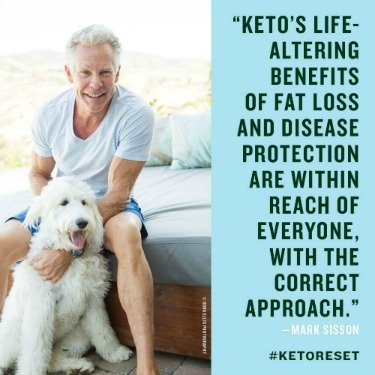 AND…a Contest! Because this is Mark’s Daily Apple of course…
AND…a Contest! Because this is Mark’s Daily Apple of course…
Thank you so much for your support and interest in my latest passion of keto as we finally arrive at the official release date of The Keto Reset Diet—today, October 3rd. The response to my assorted ruminations about keto over the past several months has been overwhelming. A brief mention here on September 14th about joining our Keto Reset Facebook group resulted in 1,000 people joining within hours! There are now over 6,600 people engaged in lively discussion at this time. The “join group” requests blew up the phone of our Facebook group host, senior writer/researcher, and resident keto recipe and lifestyle queen Dr. Lindsay Taylor. She spearheaded the recipe and 21-day meal plan projects for The Keto Reset Diet. You’ll get to know her quickly on the highly active Facebook group.
But today I want to celebrate the release and share with you one of my favorite excerpts from the book as well as a video conversation I think you’ll enjoy.
 By the way, if you haven’t purchased the book yet, we have decided to extend the “pre-order” offer of four digital bonus items indefinitely for MDA readers: a $10 gift certificate to PrimalBlueprint.com, a Keto Recipe eBook, a complete eBook version of my popular Healthy Sauces, Dressings and Toppings, and an exclusive hour-long talk show with co-author Brad Kearns and myself getting deep into the keto konversation.
By the way, if you haven’t purchased the book yet, we have decided to extend the “pre-order” offer of four digital bonus items indefinitely for MDA readers: a $10 gift certificate to PrimalBlueprint.com, a Keto Recipe eBook, a complete eBook version of my popular Healthy Sauces, Dressings and Toppings, and an exclusive hour-long talk show with co-author Brad Kearns and myself getting deep into the keto konversation.
These items are worth more than the book price, so hopefully it’s enough to get you to take action and start your Keto Reset journey.
Today I’m sharing a passage from Chapter 3 that talks about the immediate fat loss potential of keto eating and the long-term advantages of being keto-adapted. It’s part of an extensive section that discusses the broad health, performance and disease protection benefits of keto. My publisher actually advised me to not “give away” this much of the book, but I explained that these are my peeps at MDA, so a family who shares together stays together. See what you think and, as always, I look forward to your comments.
Enjoy this excerpt from The Keto Reset Diet, and please attribute if you decide to share this content on your blog or social platforms.
Perhaps the most immediate and dramatic benefit of ketogenic eating is the opportunity for quick and efficient reduction of excess body fat and easy, long-term maintenance of your ideal body composition. Ketogenic eating stabilizes appetite hormones, up regulates the metabolic processes that prioritize fat burning, and delivers a high satiety factor owing to the high fat composition of keto-friendly meals and snacks. Ketogenic eating can make you an efficient fat-burning machine. When you are in full-blown keto, you enjoy complete dietary satisfaction, rarely feel hungry (even if you skip meals!), and never have to struggle, suffer, restrict calories, or force strenuous workouts in order to burn extra calories. Instead, you allow your genetic setting as a fat-burning beast to naturally calibrate you to a healthy body composition. You will be able to properly utilize tools like Intermittent Fasting, nutritional ketosis, and ketone supplements to drop excess body fat whenever you want, without a struggle or a second thought.
While it’s a literal truth—the law of thermodynamics—that you must burn more calories than you store to lose excess body fat, the secret is not burning extra calories through exercise while painstakingly restricting dietary calories. It’s been scientifically validated that calories burned during exercise lead to a corresponding increase in appetite and a decrease in general physical activity. These dynamics are especially true for the chronic exercise patterns that desperate dieters engage in. The secret to reducing excess body fat is in hormone optimization—being a fat- and ketone-burner instead of a carbohydrate- or sugar-burner. When you eat keto, you correct the wildly excessive insulin production that is endemic to the Standard American Diet, since fat becomes your readily available fuel source around the clock.
In contrast, a high insulin–producing eating pattern shuts off fat burning and forces you to rely on ingested calories as your primary energy source. It starts disastrously with breakfast, the “most important meal of the day . . . to not screw up,” says Dr. Cate Shanahan. At your highfalutin corporate retreat at the Ritz-Carlton, your “Healthy Start” breakfast buffet features fresh berries, low-fat Greek yogurt, homemade granola, low-fat banana-nut bread with apple butter, raisin bran muffins, steel-cut Irish oatmeal (with brown sugar, raisins, and pecans), orange or cranberry juice, and coffee. If you are conscientious and serve yourself moderate portions, you’ll still consume at least 100 grams of carbohydrates and possibly up to 200 grams—more than our ancestors might have consumed over several days. And you’ll be out 36 bucks. Seriously.
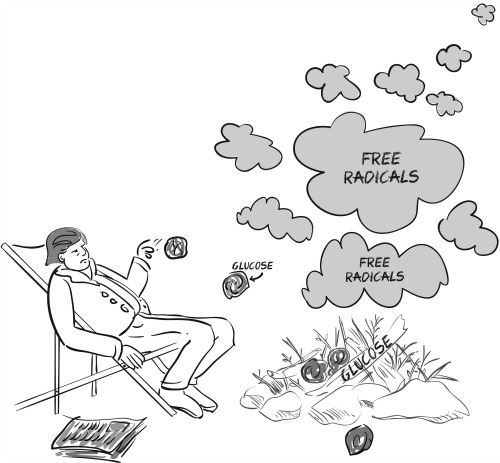
You’ll burn some of this energy off right away (generating inflammation and free radicals in the process), then prompt a flood of insulin into your bloodstream to store as fat (in the form of triglycerides) any excess glucose that you don’t burn right away. When insulin removes glucose from your bloodstream in the hours after your Healthy Start, you will become lethargic and start to feel hungry for lunch. You’ll have another high-carbohydrate binge (yes, binge; because low blood sugar triggers a fight-or-flight reaction that causes you to overeat and your hormones to more likely direct those extra calories into storage as fat—all to protect you from the perceived life-or-death matter of low blood sugar). When you repeat this high-carbohydrate, high insulin–producing eating pattern day after day for the rest of your life, you’ll contribute to the statistic that the average American gains 1.5 pounds (2/3 kilo) of body fat (and loses a half pound (1/3 kilo) of muscle each year from the ages of 25 to 55. If you fast or eat a keto-aligned meal for breakfast, none of this story happens. Instead, you sail along burning the clean fuels of fat (either from a meal or from storage), ketones, and an optimally minimal amount of glucose.

Fully Understanding the Keto Message
That’s the excerpt from Chapter 3, but please understand it’s only an excerpt. To fully appreciate the keto message and the health benefits of keto, it’s essential to adopt a big picture perspective. Case in point: another section in the book is titled, “The Keto Reset Diet is Not a Shortcut Program!” You cannot just jump into a keto eating pattern and expect the aforementioned benefits to accrue. When you cut carbs too abruptly or fail to integrate complementary lifestyle practices such as exercise, sleep, and stress management, your keto effort will likely result in the increased production of stress hormones, the conversion of lean muscle tissue into glucose to give your body the fuel source it’s grown dependent upon for decades, and eventually fatigue, poor compliance and burnout from an ill-advised effort.
Even in an enlightened group of MDA followers, our history surely includes decades of carbohydrate dependency before we saw the light and started embracing the Primal eating principles. If you have been Primal for a while, doing a great job avoiding or strictly minimizing grains and sugars, but still carry around some unwanted body fat, or have adverse blood values, or struggle with thyroid or adrenal irregularities, you likely have some level of metabolic damage and lingering carbohydrate dependency.
This is where the Keto Reset journey becomes an extremely attractive option. Go through the entire process (21-Day Reset, fine-tuning period, and six-week nutritional ketosis period) at least once, and you will experience a reset effect at the genetic level that will benefit you for the rest of your life. An annual six-week Keto Reset exercise is also a highly recommended health practice to hone your metabolic flexibility, protect against today’s epidemic of diet-related disease, and promote peak cognitive and physical performance. Even a lean, fit, athletic person will benefit from an annual Reset, whether or not they decide to adhere to nutritional ketosis over the long-term.
On the topic of extending the benefits of that annual Reset, I sat down with co-author Brad Kearns to talk about the health benefits of fasting in the big picture of keto-adaptation. In this video, we cover everything from dirty burning glucose and clean burning fat and ketones, the concept of metabolic efficiency, the contrast between overfeeding/accelerated cell division and metabolic efficiency/improved cellular repair, and all the good stuff that’s happening in your body when you ditch carbohydrate dependency and progress toward being fat- and keto-adapted.
As you likely realize, keto is incredibly hot right now, and with this attention comes lots of healthy debate—and even controversy. I’m encouraged to notice that virtually every concept presented in the book is free from objection by the thought leaders in the keto game. Even my crusty contrarian friend Richard Nikoley gives my message a stamp of approval—hard-earned praise indeed! The Keto Reset Diet presents a sensible approach that is flexible, customizable, and driven strongly by personal preference and self-experimentation. Regardless of your particulars, I’m confident the journey will appeal to you and deliver a great benefit to your long-term health.
And Now for a Contest!
 I’m giving away a signed copy of The Keto Reset Diet—along with a year’s supply of Keto Kits! Just submit your receipt for book purchase on our Keto Reset website and you’ll be entered to win.
I’m giving away a signed copy of The Keto Reset Diet—along with a year’s supply of Keto Kits! Just submit your receipt for book purchase on our Keto Reset website and you’ll be entered to win.
Already pre-ordered? No worries, your name is already in the pot! But now’s a great time to stock up for the holidays for additional additional chances to win! Yup, each copy you order puts another entry in the hat.
1 Grand Prize Winner will be chosen and notified via email on 10/18/17.
Fine print: In the event of an international winner, a prize of equal value will be awarded.
Thank you so much for your interest and commentary. I appreciate the comments below the post and also welcome you to join the Keto Reset group on Facebook for long-term engagement.
The post The Keto Reset Diet Excerpt—and a Video!—to Celebrate Today’s Release appeared first on Mark's Daily Apple.



October 2, 2017
Dear Mark: Hormone Normalizing Questions
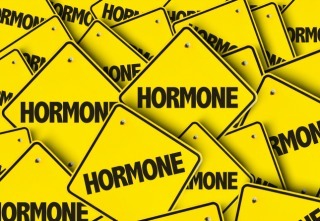 For today’s edition of Dear Mark, I’m answering questions from last week’s hormone normalization post. First I discuss a lack of purpose in the mornings affecting sleep and what to do about it. Next, I explore the prospect of sun and fasting as hormone modulators. After that, I explain the meaning of max aerobic heart rate and correct a mistake I made. And finally, I suggest to one reader that she may need to eat more calories to normalize her sleep and thus her hormones.
For today’s edition of Dear Mark, I’m answering questions from last week’s hormone normalization post. First I discuss a lack of purpose in the mornings affecting sleep and what to do about it. Next, I explore the prospect of sun and fasting as hormone modulators. After that, I explain the meaning of max aerobic heart rate and correct a mistake I made. And finally, I suggest to one reader that she may need to eat more calories to normalize her sleep and thus her hormones.
First, Jason asked:
Loved the article ! I have tried all this but it has become almost impossible for me to sleep on time. Not that i don’t sleep enough but the timings are way too off. Maybe because i don’t have anything in the morning to look forward to. Can anyone please help ?
I’m not entirely clear on the meaning of “timings are way too off,” but I’m going to give it a shot. I hope it helps.
You say you don’t have anything to look forward to in the mornings. This is a common problem. It’s also a very serious problem that you need to address ASAP.
In a very literal sense, the morning is the beginning of the rest of your life. Each morning, you wake up from a black void. You’re dreaming, and your brain is active, but you’re not conscious in the sense we normally think about consciousness. “You” don’t really exist when you sleep. For all intents and purposes, you wake up each morning an entirely different person.
To start your life each day without purpose or meaning or even a vague idea of what to do will never produce positive results.
Your disordered sleep is a product of this. Search within and find meaning. It doesn’t have to be grandiose. Maybe you join a CrossFit box for morning workouts or sign up for a yoga class or a martial arts class in the mornings. Maybe you sit down right now and plan your mornings.
What are you going to make for breakfast?
Is the coffee maker clean and ready to go?
What will you wear?
When will you brush your teeth?
Get all that planned out and ready to go.
A purpose in life can be mundane. If you’re just stumbling toward a purpose, the mundane is actually the best choice because you have to do mundane things no matter what.
Good luck.
Aklay offered up a couple other ways to normalize hormones:
Hi Mark…..Sunbathing and fasting might have been missed?
Sunbathing is a good one. It increases vitamin D synthesis, which is required to produce steroid hormones. It’s relaxing, which can reduce stress. Yeah, sunbathing will help.
Fasting is a trickier question. I certainly considered it, but found the effect too variable for general use. Reason being, fasting is a stressor. If you’re in good shape, fasting can be a hormetic stressor—a stressor that you recover from stronger than before. A stressor that forces you to improve yourself and your health.
If you’re in a bad place, fasting can simply be a major stressor—one that makes you worse, not better. One that you can’t recover from. One that weakens your constitution rather than strengthens it.
I always suggest that people add intermittent fasting to an already-solid base of health, training, and stress regulation. IF can help you burn more fat, slip into ketosis, control your appetite. All this serves to reduce oxidative stress and the overall inflammatory load.
If the wrong person starts fasting, they get worse. It becomes a major impediment to hormone normalization. For example, I would never suggest that a pregnant woman or a woman trying to conceive embark on an intermittent fasting regimen. It’s pretty clearly deleterious to fertility hormones. Women in general are more sensitive to the stress-related effects of intermittent fasting, so I’d be extra careful if I were a woman.
If I had to boil this down, fasting can solidify your control over your hormones if you already have control. It will make your normal hormones even “normaler.”
LlamaAnna asked:
I don’t understand the comment about ‘lowering his assumed aerobic base heart rate’. The way you say it sounds like he just decided one day to concentrate really hard and things changed. What are you actually talking about here? If the exercise didn’t change, what did and how?
Thanks for the question. I actually misspoke. When Brad’s T was low, he was treating 145 as his max aerobic heart rate—the fastest his heart could beat and still remain in an aerobic, or fat-burning, state. So during runs or any endurance training, he’d keep track of his heart rate, slowing down only when it exceeded 145 under the assumption that he was in the maximal fat-burning state. This was a big mistake.
His actual max aerobic heart rate was 130, a full 15 points lower. Instad of spending his training time in the fat burning zone, he was spending all his time as a sugar burner. Yet, he was living and eating as if he was a fat-burner. Don’t get me wrong. Brad was still burning fat. It’s not a binary on-off switch from fat to sugar burning. But he was burning significantly more sugar than he assumed, and it was wrecking his hormone levels.
The exercise “changed” in that it got easier. He went easier. Same movements, same runs, different intensity.
Wilhelmina wrote:
I like the sleep more part, seriously I do. But having the menopause knocking at my door it isn’t easy. I want to, but I can’t convince my body to do the same. Some nights I sleep easily up till 12 hours, but there are nights I barely sleep at all. I have a cold and dark room, since I easily get it too warm, I have magnesium before bedtime, I got dim lights in the evening, barely more than candle light, eat clean (Really Mark, your low carb diagram made me even lose weight, where most would gain, awesome!) . Any suggestions are more than welcome!
Are you eating enough calories?
You say you’ve lost, or are losing weight. The older you get, the harder it gets, and the more you have to restrict yourself, which increases the toll that takes on your body. The more you have to restrict yourself, which the body can interpret as a stressor. Assuming you’ve covered all the other sleep hygiene facets—and judging from your comment you have—you should look at calorie intake.
Eating the fewest calories you can while obtaining the most nutrients and avoiding the negative side effects of calorie restriction, like lack of sex drive, loss of muscle or bone density, and low energy levels, is the way forward, as far as I’m concerned. Sleep disturbance is a lesser known but perhaps more dangerous side effect of too low a calorie intake.
I’m not saying pig out. Just try eating a bit more. An extra serving of butternut squash with dinner, another egg at breakfast, that sort of thing. Slowly and gradually titrate up your calorie intake until it produces a change in your sleep quality. If it doesn’t help, at least you’ve eliminated a factor from contention and you can move forward in your quest.
Thanks for reading, everyone. Take care and be sure to chime in with your input down below!
The post Dear Mark: Hormone Normalizing Questions appeared first on Mark's Daily Apple.



October 1, 2017
Weekend Link Love — Edition 471
 Research of the Week
Research of the WeekScientists discover a new reason why steak, mackerel, and avocados make you fuller.
Our visual attention is automatically drawn to meaning, not “what sticks out.”
A low-carb diet beats antipsychotics.
Kids from New Zealand’s South Island get more bowel disorders than their northern counterparts thanks to a lack of sunlight.
Organic farms trap more carbon.
New Primal Blueprint Podcasts
 Episode 188: Rohini Ross: Host Elle Russ chats with Rohini Ross—a psychotherapist, leadership consultant, transformative coach and regular Huffington Post contributor who helps large groups and individuals discover success and well-being.
Episode 188: Rohini Ross: Host Elle Russ chats with Rohini Ross—a psychotherapist, leadership consultant, transformative coach and regular Huffington Post contributor who helps large groups and individuals discover success and well-being.
Each week, select Mark’s Daily Apple blog posts are prepared as Primal Blueprint Podcasts. Need to catch up on reading, but don’t have the time? Prefer to listen to articles while on the go? Check out the new blog post podcasts below, and subscribe to the Primal Blueprint Podcast here so you never miss an episode.
9 Ways to Normalize Your Hormones
6 Food Products I Love to Hate and 5 I Just Love
Testosterone Supplementation: My Primal Take
INTERESTING BLOG POSTS
Neanderthals lived in a wonderland of OTC penicillin.
How early 20th century Austrian psychiatrists used modern architecture to treat a modern malady.
The trick is finding that delicate balance between toxic stress and beneficial stress.
MEDIA, SCHMEDIA
“Intermittent fasting is terrible for athletic performance.”
Some guy gives his three top tips for becoming a fat-burning machine.
EVERYTHING ELSE
Macaques, you were doing so well.
Humans have been around for a lot longer than we thought.
Thai soldier performs CPR on tiny drowned puppy.
THINGS I’M UP TO AND INTERESTED IN
Why I always look for the bright side of adversity: “After a Hurricane, New Confidence.”
Video I liked: Dr. Emily Deans talks magnesium.
Subculture I had no idea existed: Bitcoin carnivores.
GMO I’d be interested in: Gluten-free wheat. Wonder if the bread quality holds up, since gluten is crucial for texture.
Terrible if true: Why farmers spray glyphosate on crops right before harvest.
RECIPE CORNER
Get your electric pressure cooker and your flag and make yankee pot roast.
Loaded broiled salmon wedge salad.
TIME CAPSULE
One year ago (Oct 1 – Oct 7)
Why the Variety of Your Protein Sources Matters – Don’t just eat chicken breast.
6 Reasons Why Mistakes Are Important for Success – Failures are lessons.
COMMENT OF THE WEEK
“For me, the appeal of Facebook is knowing what’s going on in the lives of my numerous friends all over the globe. I agree, it’s easy to use mindlessly, but it’s also really great to spend 5 minutes before bed and read about what my friends in Australia, England, Holland, Denmark and elsewhere did today. Technology isn’t 100% evil — it’s all about how you use it.”
– Nicely said, Margaret.

The post Weekend Link Love — Edition 471 appeared first on Mark's Daily Apple.



September 30, 2017
Lamb Shakshuka
 Although inspired by Middle Eastern shakshuka (eggs poached in tomato sauce), this version is for meat lovers. Instead of thick tomato sauce, these eggs are simmered over ground lamb and bone broth, with a handful of charred cherry tomatoes thrown on top. The cherry tomatoes, plus a generous amount of herbs, give this high-protein meal a fresh, light flavor. It?s fantastic for breakfast, lunch or dinner.
Although inspired by Middle Eastern shakshuka (eggs poached in tomato sauce), this version is for meat lovers. Instead of thick tomato sauce, these eggs are simmered over ground lamb and bone broth, with a handful of charred cherry tomatoes thrown on top. The cherry tomatoes, plus a generous amount of herbs, give this high-protein meal a fresh, light flavor. It?s fantastic for breakfast, lunch or dinner.
If you want to start your day with this powerhouse meal, consider cooking the meat and tomatoes ahead of time. Right before breakfast, reheat the meat in a skillet with eggs. It?s an easier way to enjoy a hearty breakfast and still get out the door on time.
Servings: 4
Time in the Kitchen: 45 minutes
Ingredients

12 to 16 ounces cherry tomatoes, halved (340 g to 453 g)
3 tablespoons avocado oil, divided (45 ml)
1 onion, finely chopped
4 cloves garlic, thinly sliced
1 pound ground lamb (or other ground meat) (450 g)
1 teaspoon ground cumin (5 ml)
1/2 teaspoon smoked paprika (2.5 ml)
¾ teaspoon salt (3.7 ml)
½ cup bone broth (or chicken broth) (120 ml)
Fresh herbs for garnish, like parsley or dill
Instructions

Heat 1 tablespoon (15 ml) avocado oil over medium-high heat in a wide saucepan that has a lid. When the pan is really hot, add the cherry tomatoes and cook about 5 minutes until the tomatoes are lightly charred and begin to soften. Stir the tomatoes as little as possible. Remove the tomatoes from the pan and set aside.
Add the remaining 2 tablespoons avocado oil to the pan. Add the onion and sauté 3 to 5 minutes until the onion begins to soften. Add the garlic, and sauté 2 minutes more. Add the lamb and season with cumin, smoked paprika, and salt. Cook until lightly browned and no longer pink, about 6 minutes.
Add bone broth to the saucepan, and bring to a boil. Turn the heat to low. Crack 4 to 6 eggs in the pan on top of the meat.*
Cover the pan with a lid and cook until the egg whites are set (about 7 minutes) but the yolks are still soft.
Before serving, add the tomatoes and garnish generously with chopped parsley, dill, or other fresh herbs.
*The meat and tomatoes can be cooked ahead of time, then reheated in smaller portions with a little bit of bone broth and 1 or 2 eggs.

The post Lamb Shakshuka appeared first on Mark's Daily Apple.



September 29, 2017
My Entire Life Changed When My Nutrition Did
It’s Friday, everyone! And that means another Primal Blueprint Real Life Story from a Mark’s Daily Apple reader. If you have your own success story and would like to share it with me and the Mark’s Daily Apple community please contact me here. I’ll continue to publish these each Friday as long as they keep coming in. Thank you for reading!
 I never thought about writing my story and sharing it here but, I realize now my story is a crucial part of my life, business, and relationships. I share it every day and will be so happy if it inspires at least one person to take action to start healthier living.
I never thought about writing my story and sharing it here but, I realize now my story is a crucial part of my life, business, and relationships. I share it every day and will be so happy if it inspires at least one person to take action to start healthier living.
I moved to the states from Russia in 2010. I had quite an unhealthy lifestyle back home: ate sugar, drank tons of coffee, stayed up at night, smoked cigarettes, and I never exercised. When I moved to the US, my host family (thank God someone was so dear to influence me) made an ultimatum: I either quit smoking or I can’t stay with them. I had no other options, and quit after 8 years of chain smoking and 4 years of attempting to quit. Part one of getting healthier was done.
In the next two years, I got chubby. I never got fat, but with no exercise my muscle tone was remarkably similar to a marshmellow. I was hooked on all the new packaged and easy to eat foods. I could eat a box of Cheez-Its after dinner, my lunch was 2 huge grilled cheese sandwiches daily, and I ate cookies in between classes in college. Needless to say, I took many classes, and there are many types of cookies…
By May of 2012, I looked and felt horrible. I had acne, indigestion, migraines, high blood pressure for a girl in her late 20s. I did not gain a ton of weight, but 15 pounds extra were there for sure. I hated my body. I couldn’t run a mile since I was a child, and it usually resulted in me fainting (seriously!). I had a terrible self-esteem and never had energy. Then I had a bad breakup. One of those stab-you-in-the-back-for-no-reason (oh, was there a reason?) type of affairs.
A couple of weeks prior to that, my new friend named Mark told me about Paleo and Primal. He sent me those initial lists from the Primal Blueprint and recommended Loren Cordain’s book as well as MDA. I hit rock bottom with my health and was desperate to try something new. In fact, I was a vegetarian for 8 years at that point, and out of nowhere I started secretly getting in my friends’ fridge in the middle of the night to eat frozen, pre-cooked bacon (yuck). It was hard to “come out” but I did. And once I did, I switched to no sugar, no gluten, and no dairy.
For the next few weeks, I felt PHENOMENAL. I felt like I was reborn. I slept for 4 hours and would wake up well rested. I started running. I could run a mile, then two. Then I signed up for a half marathon and ran after 3 months of easy, enjoyable training. I worked through my other issues. Acne cleared. Blood pressure improved dramatically. Self-esteem went up. I looked amazing and felt like a queen of the world.
My mindset changed. My relationship with myself changed. I respected myself so much more and my confidence grew daily. My grades went up. I was totally rocking my life.
And then when I was not looking (of course), I met my prince Charming, who prior to meeting me lost 200 pounds on keto. Since he randomly ran into my life, and since we ate the same way we decided to get married. Kidding. It was a commonality that did bring us closer. We fell madly in love and could not spend any time apart. He enlisted in the military, and we have had plenty of adventures ever since. He kept the weight off and taught me how to cook delicious, low-carb friendly meals. Now I do most of the cooking, since the military can be so demanding, but we still keep the same high standards in our food.

I did a fair share of not-so-primal long distance running ever since, and then switched to CrossFit, other fun workouts, playing more, and listening to my body.
Fast forward 3 years. I quit a successful corporate job because one of our mutual life goals is to help 10,000+ people to restart their lives through health. I became a Primal Health Coach in August 2016 and started my practice then. You can find me at AnyaPerry.com. I am happy to do what I love every day, and see how people’s lives change; It makes my heart beat faster and really is a great motivation every morning. I am honored I could learn from Mark and MDA so many things about the Primal lifestyle. I am now a CrossFit Level 1 coach and coach both CF classes and nutrition at a local gym. I eat low-carb and primally most of the year, and carb-cycle when I build. I have so much energy daily, and I know I am extending my life every hour by fueling my body with proper food, good movement, and positive thoughts.
Thank you, Mark, for being such an inspiration and well of knowledge for people. I will always cherish that and continue sharing knowledge with the masses.
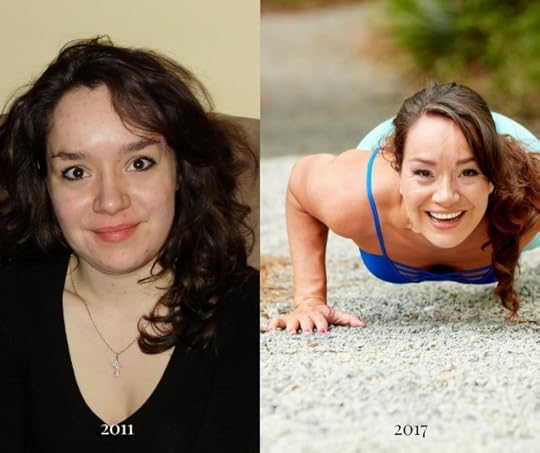

The post My Entire Life Changed When My Nutrition Did appeared first on Mark's Daily Apple.



Mark Sisson's Blog
- Mark Sisson's profile
- 199 followers




